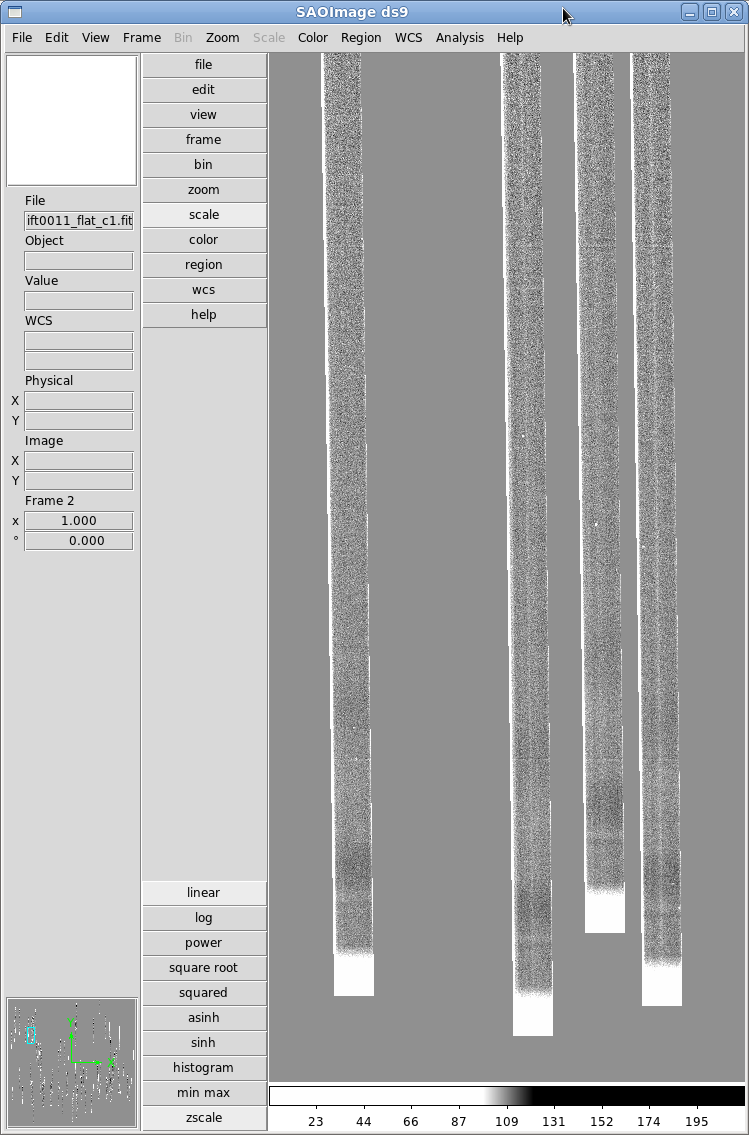flats.html
Creating Spectroscopic Flat Fields
First, we edit the Sflats parameter file to make sure that we use the proper values for the wavelength range, noise, and gain.
editpar Sflats ./Sflats.par type q to end minlambda 4800.000000 min wavelength of extraction maxlambda 7800.000000 max wavelength of extraction telscale 2.899000 telescope scale sec per mm bias_file none bias level file siglimit 4.000000 CR rejection threshold in sigmas noise 4.100000 CCD read noise gain 0.470000 CCD gain order 5 order of flat intensity fit fit_mode median method of spectrum fitting med_box 100 size of sky fit median box shuffled 0 number of pixels to shuffle data
Then we can run the Sflats command below to generate a normalized flat-field frame, called ift0011_flat_cX.fits, where X goes from 1 through 8. Figure 7 shows a section of the resulting processed flat-field frame.
Sflats -m ift0012 -f ift0011
Next: Flat-field the Science Exposures Up: Reducing the Spectra Previous: Reducing the Spectra Contents
Edward Villanueva 2014-08-27

